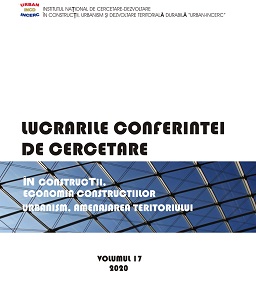Evoluţii şi probleme ale analizei pushover convenţionale
Evolutions and problems of conventional pushover analysis
Author(s): Florina FILIP, Adrian-Alexandru Ciobanu, Monica Cherecheş,, Andrei DUTA, Daniel Gherghel, Marius MÂRŢ
Subject(s): Architecture
Published by: INCD URBAN-INCERC
Keywords: nonlinear analysis; pushover; adaptive pushover
Summary/Abstract: Understanding the relationship between seismic movements and the dynamic response of structural systems, was the moments that changed the approach of seismic engineering. The development of the process was first possible by modeling the seismic response in the elastic domain through models with a single degree of freedom and elastic response spectra, then by modeling the elasto-plastic behavior using inelastic spectra. The shift to the automation of calculations, as well as the influence of historical earthquakes, has radically changed the traditional way of designing, in that the research of the behavior of structures throughout the elasto-plastic field, tends to become a current practical application technique for substantiating design solutions: the possibility of performing fast structural calculations, with increased repetitiveness, modeling nonlinear behavior at the section level, on the element level or global level. The opportunity to develop and, in particular, of applying new calculation methods, much more accurate methods of calculation, meant to replace the traditional methods of calculation, which proved to be deficient in many occasions. The main objective of this paper was to show the effectiveness of the conventional pushover analysis method, as well, the way in which the recent developments regarding the evaluation of the seismic performance have led to improve the analysis methods used.
- Page Range: 49-58
- Page Count: 10
- Publication Year: 2020
- Language: Romanian
- Content File-PDF

